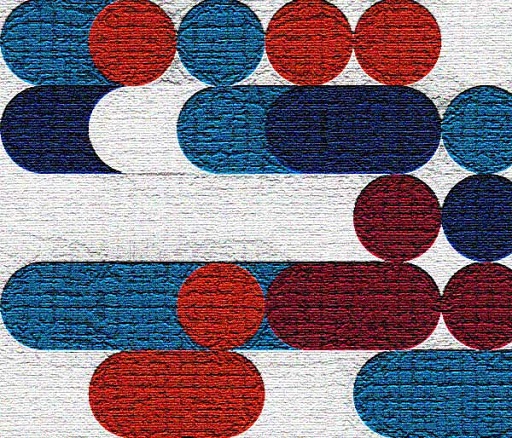Use 'Print preview' to check the number of pages and printer settings.
Print functionality varies between browsers.
Printable page generated Saturday, 22 November 2025, 10:49 AM
1: Introduction
1: Introduction
The purpose of this course is to help you think about your reflexive practice in relation to care with Unaccompanied Asylum-Seeking Children (UASC) and separated/lone migrant young people. The capacity to reflect is part of your core professional competence and helps you think about your own practice, your approach to your work and to learn from the process. Working in any kind of social care capacity with vulnerable young people is extremely tough, dynamic, and an often emotionally draining job, so it is useful to think about what shapes your practice and why. Throughout the course you will be introduced to the thoughts and opinions of practitioners and professionals who work with UASC, and young people who are themselves separated child migrants.
This training will enable you to better understand your own and others’ perspectives on young people’s care relationships – including, their care of each other.
Who is this training for?
This course is aimed at social workers, senior practitioners, personal advisors and other professionals and practitioners working with UASC. The course can either be taken online by individuals or the course materials can be downloaded for use in face-to-face workshops by social worker trainers.
Downloadable materials and further support
As a 10-hour introductory CPD, this course is not sufficient training for people intending to specialise in working with UASC. Completion of the course is not a qualification or a guarantee of competencies. If you are a social worker taking this course, remember to add it to your CPD record to meet the requirements for registration. By the end of this course, you will be able to answer your two key requirements: describe what you have learnt; then state how the CPD has had a positive impact in practice on the people you work with. If you are differently qualified, this course will enhance your reflexive practice skills.
For those who complete this course and are interested in seeking further training outside of your local provision, suggestions can be found in the ‘further study’ section of the course.
 Learning outcomes
Learning outcomes
By the end of this ten-hour course, you will:
- Have a critical awareness of the meanings and complexities of the concept of ‘care’.
- Understand how different perspectives on ‘childhood’ influence our views of the care of UASC.
- Have reflected on professionals’ and social care practitioners’ views on care.
- Have reflected on UASC young people’s perspectives of care.
- Have critically reflected on your own values and experiences of care practices and caring relationships of UASC.
Using evidence-based training
A core feature of this course is that it is evidence-informed – in other words, the core content is based on research findings as opposed to anecdotes or opinion. As well as drawing on academic literature, the course is based on data and dissemination outputs from a research project called Children Caring on the Move, which is described in more depth in the next section. The data provided comes from what young people, professionals and social care practitioners have told us about their lives, their working practices and a key element of our study: young people’s care of each other. We have provided you with both young people’s and adults’ data so that you can explore some of the synergies and differences in their perspectives. At times you may agree or disagree with what they say. That is ok! It is important to reflect on where your own views relate or diverge and why that might be the case. Another important point to note is that all names used in this course are pseudonyms to protect the anonymity of our participants.
 Activity 1.1: Personal learning goals
Activity 1.1: Personal learning goals
Before you get started, spend a few minutes thinking about what you hope to gain from the course, both personally and professionally.
- What aspects of working with UASC do you struggle with the most?
- How do you feel about working reflexively in your own practice?
- What barriers do you feel there are to working in this way?
Make some notes in the box below.
Discussion
You might have some experience of working with Unaccompanied Asylum-Seeking Children (UASC) and young people and want to learn more, or working with this group might be new for you. The critical reflections aspect of this training may make you feel discomfited or uncertain about your practice. Don’t worry, this is normal and engaging in CPD will hopefully give you new understandings of your own and other’s practices.
The first half of the course unpacks some important concepts from the academic literature around care and childhood. These concepts may look quite different to how you think about them through your own training and practice. Hopefully, examining these ideas from a fresh perspective can feed into your own practice.
A word about ethics
This training aims to improve learners’ ability to understand and work with UASC in a caring and compassionate way. Whether you are a qualified social worker or a differently qualified professional or practitioner, you will find it helpful to look at The Code of Ethics for Social Work: Statement of Principles from the British Association of Social Work. It is also useful to examine the regulatory standards for your region of work:
1.1: The Children Caring on the Move project
The Children Caring on the Move project set out to examine Unaccompanied Asylum-Seeking Children’s (UASC) experiences of care, and caring for others, as they navigated asylum and welfare systems in England. We started with the premise that care is not necessarily limited to what adults (or the state) provide for young people. Our work has shown that young people provide a lot of care for each other, but we wanted to understand what that care looks like. We also wanted to explore what professionals and practitioners who work with UASC and other separated child migrants thought about young people’s care of each other.
Rising numbers of child migrants
The project sits against a backdrop of rising numbers of children who have been separated from primary caregivers during migration. According to Unicef’s International Data Alliance for Children on the Move, 2020 saw a record number of international child migrants at an estimated 35.5 million. The Covid-19 pandemic, war and unrest countries like Afghanistan and Ukraine, and reoccurring natural disasters, all suggest that this picture is unlikely to change and may get worse.
In the next activity, you will explore some of the key pieces of data.
 Activity 1.2: The data picture on unaccompanied, refugee and asylum-seeking children
Activity 1.2: The data picture on unaccompanied, refugee and asylum-seeking children
Take a look at some key data about child migrants. Have a guess at what you think are the right answers.
a.
3.5 million
b.
11.5 million
c.
18.5 million
d.
26.5 million
The correct answer is b.
a.
1458
b.
2820
c.
3762
d.
5105
The correct answer is c.
a.
Greece
b.
Spain
c.
Italy
d.
Malta
e.
Bulgaria
f.
Cyprus
The correct answer is d.
d.
Malta (93%)
Greece (12%)
Spain (38%)
Italy (84%)
Bulgaria (48%)
Cyprus (30%)
a.
Afghanistan
b.
Syrian
c.
Iraq
d.
Venezuela
e.
Colombia
f.
Eritrea
The correct answer is b.
b.
Syrian (22%)
Afghanistan (13%)
Iraq (6%)
Venezuela (4%)
Colombia (4%)
Eritrea (4%)
a.
Sudan
b.
Syria
c.
Afghanistan
d.
Eritrea
e.
Albania
The correct answer is c.
c.
Afghanistan (25%)
Sudan (16%)
Iran (14%)
Eritrea (12%)
Albania (9%)
Syria (5%)
Data sources:
The research
The immigration conditions within countries like the UK are noted to be difficult for both young people and the professionals working with them (Crafter et al., 2021). On the one hand, the duty to care is a central tenet of any practice when working with vulnerable children such as UASC and other separated child migrants. On the other hand, stringent immigration practices, policies, bureaucracy and structural challenges undoubtedly present personal tensions and professional constraints for those whose role is meant to foreground ‘care’. Therefore, we wanted to explore how UASC, or those involved in their care, make sense of and value care relationships and caring practices.
One key assertation in the academic literature is that there is an inherent contradiction around ‘care’ and ‘immigration’. On the one hand, young people must be protected because of their ‘child status’ and, in theory, have the same rights and entitlements as any other children in care. On the other hand, their ‘immigration status’ means they are afforded time-limited welfare and care support under Schedule 3 of the Nationality, Asylum and Immigration Act of 2022 (Chase and Allsopp, 2013). From a practice point of view, these divergent pathways to adulthood arguably present a different set of challenges for working with UASC compared to ‘citizen’ children.
 Pause for reflection: the unique challenges of working with UASC
Pause for reflection: the unique challenges of working with UASC
What challenges do you think are unique in working with UASC compared to ‘citizen’ looked-after children? What are the similarities?
Make some notes in the box below:
1.2: How did we collect our data, and with whom?
We collected data from both young people and adults who might have either a formal or informal care connection with UASC.
Collecting data from young people
The way we wanted to gather data from our young people was quite unique compared to many research projects. First, we recruited a group of enthusiastic unaccompanied young people to work with us collaboratively as ‘Young Researchers’. We trained them in social research skills that students might learn at school or University when conducting their own research projects, such as interviewing skills. The Young Researchers then conducted interviews with other UASC with the support of the University researchers.
Overall, our team of Young Researchers and University Researchers worked with 50 young people over the duration of the project.
 Activity 1.3: Care objects
Activity 1.3: Care objects
During one of our interviews, the young people were asked to bring with them or describe an object that means ‘care’ to them and respond to interview questions about care.
Tick the items that you think our young people mentioned to us.
Discussion
Were you surprised by the some of the objects that young people brought to the interview? It may not surprise you that many of the items young people listed were important to them because they represent an important relationship. For example, the dictionary and the religious books were given to one young person from their social worker, and although the young person didn’t know them well, they remembered that for a long time. Many of the other objects were presents from friends. Technology, like phones, were the means to reach out to distant family to help them get through hard times.
Collecting data from adults
We deliberately set out to collect data from as many sectors of professionals, social care practitioners and informal care connections as we could access. Previous literature has tended to focus on particular areas like foster care (Join‐Lambert and Reimer, 2022; Reimer and Join‐Lambert, 2022; Sirriyeh, 2013; Sirriyeh and Ní Raghallaigh, 2018) or social work (Devenney, 2019; Kohli, 2006; Wright, 2014). Fewer studies have looks across a range of sectors which, for us, included social work, foster care, charity advocates, educators, paediatricians, mental health therapists, interpreters, immigration lawyers, and border force. Our study took place during the middle of the Covid-19 pandemic so there were limitations in gaining access to all the adults who connect with UASC as part of their life or work.
Our interviewees worked at a variety of levels; some of them were Project Managers and Co-ordinators and others worked directly with young people. In total, we interviewed 64 professionals and practitioners. Our interview schedule broadly covered four areas:
A note on language
Throughout this course we use the term ‘Unaccompanied Asylum-Seeking Children’ (UASC) but it has been recognised as an oppressive term that may be counter to social work values by over-emphasising a child’s immigration status over the child themselves (see Crawley, 2011). Additionally, not all young people who migrate without kin seek asylum. They may not describe themselves as ‘unaccompanied’ if they, for example, travelled with another young person. However, it is the most commonly used terminology within social work and, therefore, we have used it for the purposes of this course.
1.3: Section summary
This section has focused on the Children Caring on the Move project which forms part of the evidence-base for this training, alongside other academic literature in this area. In the following section, you are going to explore the concept of ‘care’ in ways that seek to explicitly draw on critical and reflexive perspectives that have been used across various fields of study, including social work (Meagher and Parton, 2004).
Now, continue to 2: What does it mean to ‘care’?.



